
Color is one of the most effective tools in interior design. It sets the tone for a room, influences mood, and creates a visual flow. A well-chosen color palette can make a small room feel larger, a dark space feel lighter, and can transform even the simplest furniture into a statement. Color is not just about aesthetics—it’s about creating an environment that feels right to you, one that complements your lifestyle and resonates with your personal taste. Whether you want to create a calming retreat or an energetic, vibrant space, your color choices lay the foundation for the entire design.
It’s an opportunity to showcase your personality, define the ambiance, and visually enhance the functionality of the space. In this article, we’ll help guide you through the process of selecting the perfect color scheme for your home, ensuring that each room feels cohesive, inviting, and tailored to your tastes.
Choosing The Best colour scheme for you home decor
Table of Contents
Start with the Less Flexible Elements
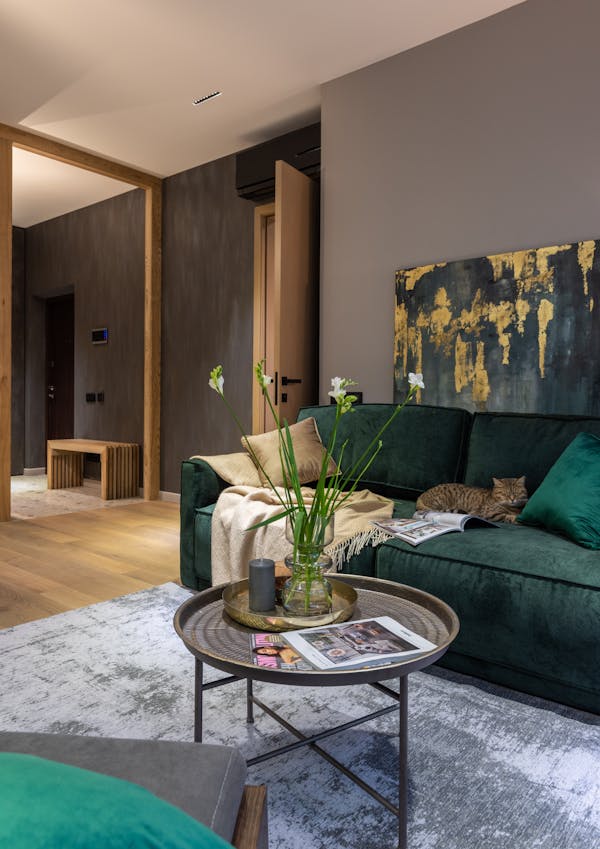
One of the most common mistakes people make when planning a room’s color scheme is jumping straight into choosing paint colors. While paint is one of the easiest things to change, it’s best to first consider the elements in the room that are harder to change—like your furniture, flooring, or fixed features. These items set the tone for the entire space and are often costly or impractical to swap out.
Prioritize Existing Pieces
Before reaching for a paint swatch, look at the more permanent features in the room. If you already have furniture or a rug that you love, use it as your inspiration. Take note of the colors, patterns, and textures in these items, and then build your color palette around them. If your sofa is a deep navy blue or your flooring is a warm wood tone, these elements can guide the direction for your wall colors and accent pieces..
Consider Textures and Materials
Materials like wood, stone, and metals also play a significant role in the feel of the room. A room with wooden floors might look best with warm, earthy tones or soft neutrals, while a space with sleek stainless steel appliances might lend itself well to modern, cool tones. Pay attention to these details as they will inform your choices and make sure that your room’s color scheme feels cohesive and balanced.
Related: 24 bedroom wall decor ideas and tips
Use a Beloved Item as Your Inspiration
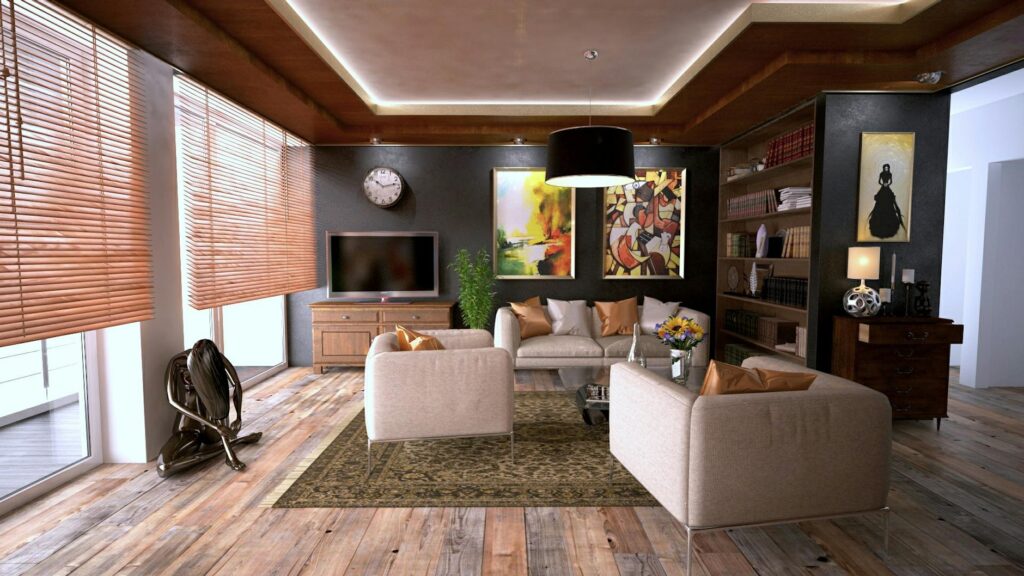
Sometimes, the best inspiration for a color scheme comes from an item you already own and love. This could be a piece of artwork, a favorite blanket, a family heirloom, or even a beautiful photograph that evokes positive emotions. The key is to identify the primary colors within that item and use them as the base for your room’s color palette.
Start with the Dominant Colors
Identify the dominant hues in your chosen object, and let those dictate the foundation of your room’s scheme. For example, if you have a vibrant red rug, consider pulling in softer shades of red or pink as accent colors throughout the room. If a piece of art features shades of blue and green, those colors can work together as the central theme for your room.
Balance with Proportions
Once you’ve picked your dominant colors, make sure to consider the proportions. If your beloved item has a dominant color but also includes accent tones, try using the main color on larger surfaces (like walls or furniture) and introduce the accent tones as smaller details in accessories like throw pillows, artwork, or curtains. This balance ensures the room doesn’t feel overwhelming or overly busy.
Consider the Value of Your Colors
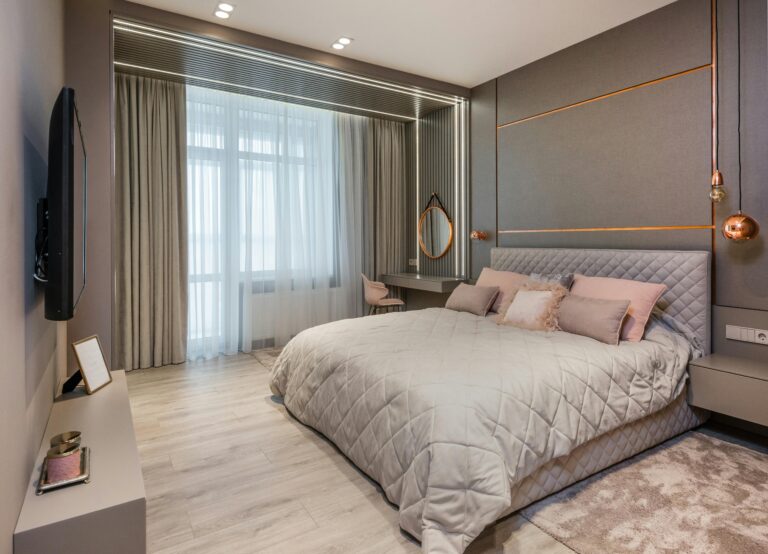
When choosing a color scheme, one key principle to consider is the “value” of the colors—essentially, how light or dark a color is. A good mix of light, dark, and bright colors can help create contrast, balance, and harmony in your space.
Light, Dark, and Vibrant Tones
It’s important to incorporate a variety of values to avoid your room feeling flat or one-dimensional. Choose one darker color, one lighter color, and one vibrant, saturated color. For example, you could have a dark accent wall in a rich navy blue, light neutral tones like cream or soft gray for the main walls, and a pop of bold color (such as mustard yellow or forest green) in smaller elements like throw pillows or artwork. This ensures that your room feels visually dynamic and balanced.y busy.
The Role of Contrast
Contrast can add drama and sophistication to a space. It can help draw attention to specific areas, highlight architectural features, and create depth. For instance, pairing a dark trim color with a lighter wall color can highlight the shape of your windows or doors, giving the room a more polished and structured feel.
If You’re Unsure, Plan Ahead
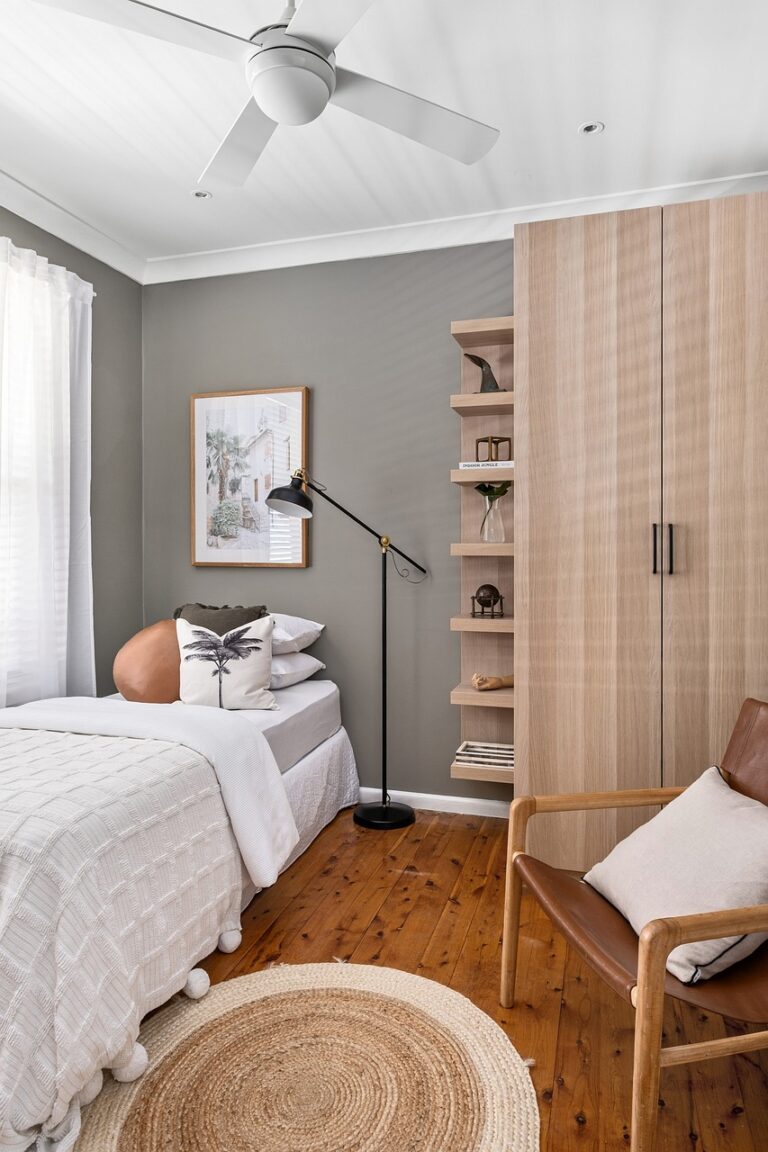
If you’re not confident in your color choices, taking the time to plan ahead can save you from making costly mistakes. This is where visualizing the space can help guide your decisions.
Sketch or Create a Mood Board
If you’re uncertain about how different colors will come together, try sketching out a layout of your room, including furniture, rugs, and fixtures. Use this as a guide to visualize how colors will interact with each other. Alternatively, you can create a mood board using physical swatches or digital tools like Pinterest. This can help you test color combinations and find patterns that resonate with you.
Evaluate the Space’s Feel
Think about how each room should feel. Should it be relaxing and cozy or bright and energizing? Consider the primary function of the space (e.g., a bedroom should feel serene and restful, while a kitchen might need to feel fresh and lively). Planning ahead gives you the clarity you need to create the right atmosphere.
Think About Room Transitions
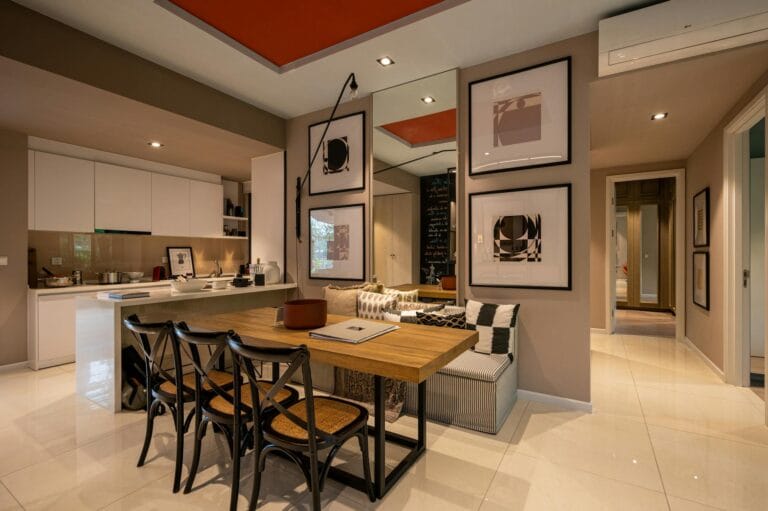
When selecting colors for your home, don’t forget about how each room flows into the next. In open floor plans or homes with an open concept, transitioning from one room to another without creating a jarring effect is key to maintaining a cohesive feel.
Create Cohesion Between Rooms
The easiest way to do this is by using one consistent color throughout the home, whether it’s for trim, doorways, or accent pieces. For example, you might use a neutral tone throughout all rooms, then use bolder colors in specific spaces like the living room or bedroom. This helps create a seamless transition between spaces while still allowing for each room to have its unique personality.
Think About Sightlines
Consider sightlines and the relationship between rooms. If one room opens into another, the color scheme should transition smoothly, allowing one space to flow into the next. For example, the living room and dining area might share a color for the walls or trim, but each could have its own distinctive accents to create a visual distinction between the spaces. while still allowing for each room to have its unique personality.
Lighting Plays a Crucial Role in Color Perception
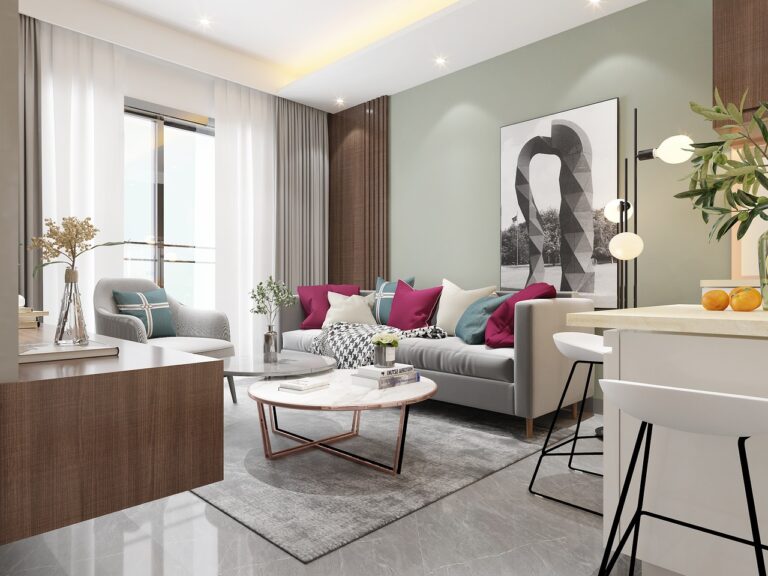
Lighting can dramatically affect how colors look in a room. Natural light changes throughout the day, while artificial lighting can also cast different tones, altering how colors are perceived.
Test Colors in Various Lighting
When choosing colors for your home, it’s essential to test how they appear in different lighting conditions. Colors look different under morning, afternoon, and evening light, and they also shift when lit by different types of artificial light, such as incandescent or LED bulbs. A color that appears warm and inviting in natural daylight may look cold and uninviting in the evening under fluorescent lighting.
Factor in Room Orientation
The orientation of your room also affects how light impacts color. Rooms with lots of natural light, such as south-facing rooms, are great for cooler or neutral tones, while rooms that receive limited daylight, such as north-facing rooms, benefit from warmer, richer shades. Always test paint samples on walls before committing to ensure the color works in all lighting conditions.
Be Mindful of Artificial Light Sources
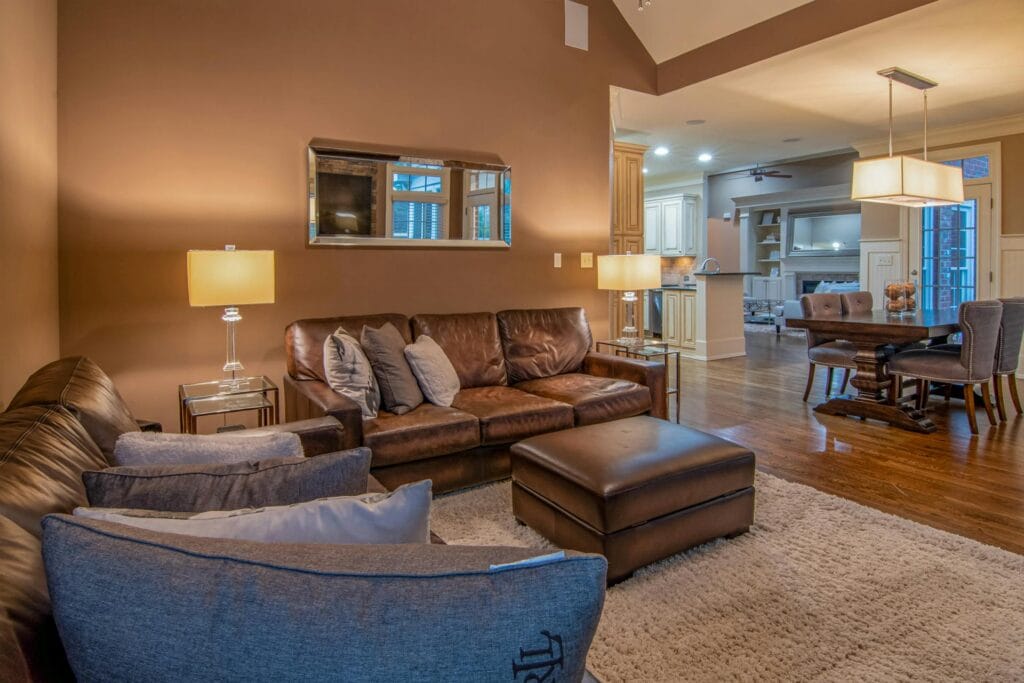
Artificial lighting, such as overhead lights, lamps, and sconces, can make colors appear different. Incandescent light, which has a warm, yellowish hue, is better suited to warmer tones like reds, oranges, and yellows, while cool-toned LED lighting can enhance blue, green, and purple shades.
Plan for Evening and Night time Use
Consider how the lighting in the room will affect color perception, especially if you plan to spend a lot of time in the space at night. Rooms that are lit primarily with artificial lights might need slightly different color schemes compared to those that get ample natural light.
Incorporate Color in Small Ways
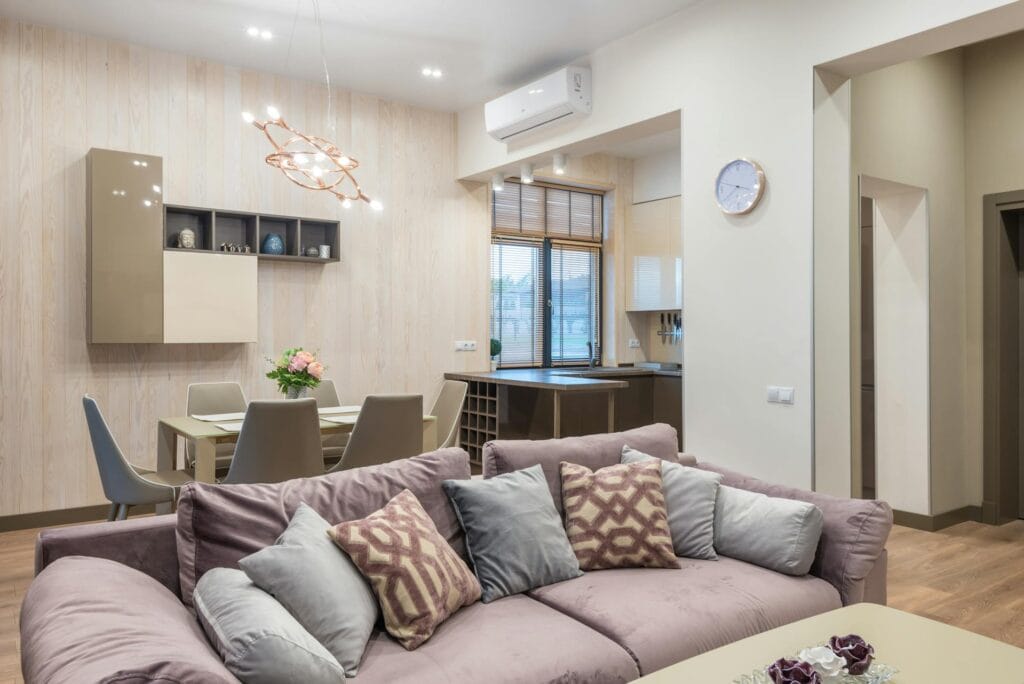
Not everyone is comfortable committing to bold wall colors, and that’s perfectly okay. There are plenty of ways to bring color into a room without painting every surface.
Use Fabrics and Accessories
For those who prefer neutral tones on the walls, colorful fabrics and accessories can still make a big impact. Think vibrant throw pillows, colorful rugs, or patterned curtains. These elements allow you to introduce color into the space without the permanence of paint.
Add Art and Decorative Objects
Personalize your space with artwork, collections, or even fresh flowers. Whether it’s a large painting or a cluster of colorful vases, these small additions can introduce pops of color that will tie the room together and give it a lived-in feel.
Color Can Do More Than Just Brighten a Spa

Color affects how we experience a room—it can expand or shrink the feeling of a space, create a specific ambiance, or even influence your mood.
Make a Room Feel Larger or Cozier
Lighter colors often make small rooms feel more expansive, while darker tones can make larger rooms feel more intimate. If you’re working with a room that has high ceilings, painting the ceiling a darker color can create a sense of coziness. Conversely, lighter shades can help make a low ceiling feel taller.
Create a Mood
The emotional effect of color is one of its most powerful qualities. Soft blues and greens evoke a sense of calm, while brighter hues like yellow and orange stimulate energy. Choose colors that reflect the mood you want to create in each room.
Choosing a Color Scheme for Open-Concept Spaces
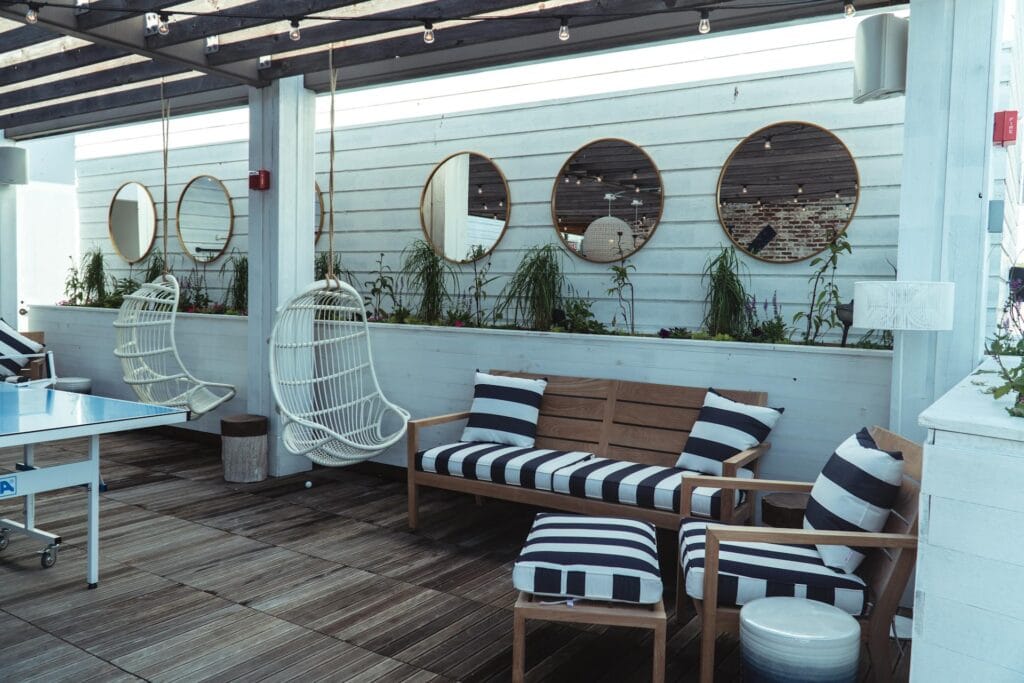
In open-concept homes, transitioning from one area to another can be tricky. You don’t have to use the exact same colors throughout, but it’s important to create a sense of flow.
Use Architectural Features as Boundaries
In large open spaces, consider using architectural features, like columns or half-walls, to separate colors and define zones. For example, use one color for the kitchen area and another for the living area, but maintain a consistent trim color for cohesion.
Use Rugs and Furniture to Define Zones
In an open-plan room, use furniture and rugs to visually break up the space. A rug in the dining area can anchor the space, while the living area might have a contrasting rug to provide visual distinction.
conclusion
Choosing the right color scheme can completely transform your home, setting the mood and enhancing the space. Start by considering permanent elements like furniture and flooring, and use them as a base for your color choices. Be sure to balance light, dark, and vibrant hues for depth and harmony, and test colors in different lighting to see how they change throughout the day.
In open-concept spaces, create flow by using architectural features or rugs to define zones. And remember, color not only decorates but also affects how we feel—so trust your instincts and choose shades that resonate with you.With these simple tips, you can create a cohesive and inviting color scheme that reflects your personal style and makes your home feel welcoming and comfortable. Happy decorating!
